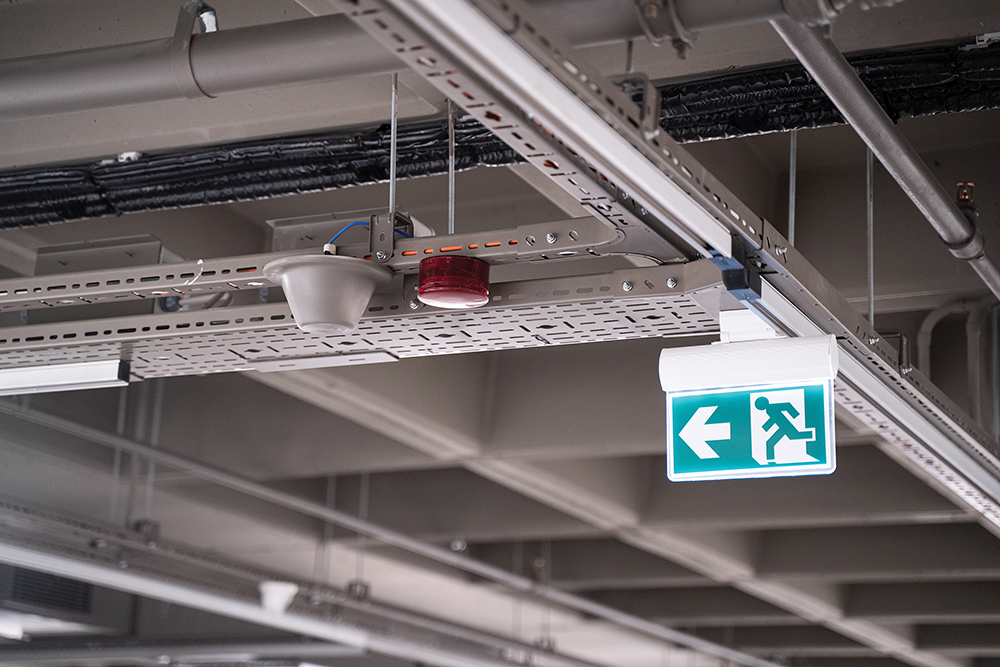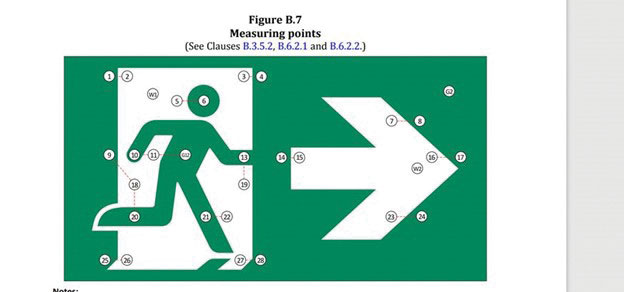Rule 36-110 refers us to Canadian Electrical Code Table 33, Horizontal Clearances from Adjacent Structures, and to Table 34, Vertical Clearances for Overhead Lines, to provide minimum safety clearances for installations operating in excess of 750 volts. Table 33 provides minimum horizontal clearances between high voltage conductors and buildings. Table 34 provides minimum ground clearances for overhead lines.
This article reviews Rule 36-110, Tables 33 and 34 and their reference to the CSA Standard CAN/CSA-C22.3 No. 1-01, Overhead Systems. Tables 33 and 34 both apply to voltages up to 69 kV. For applicable clearances above 69 kV, Rule 36-110(2)(a) refers us to this CSA overhead lines standard.
Based on their operating voltages, both the CEC and the CSA standard provide a range of minimum horizontal and vertical clearances for overhead conductors. But their minimum specified clearances are different. The tables found in the CSA standard usually result in smaller clearances than those found in Tables 33 and 34. So why are these minimum requirements different?
Tables 33 and 34 both contain the note “See Appendix B.” When we turn to Appendix B, we find the following statement: “The spacings and clearances shown in these tables differ intentionally from those found in CAN/CSA-C22.3 No. 1, as explained in Clause 4.2.1 of that standard.” But what’s that all about?
If we are fortunate enough to have a CSA overhead lines standard on our bookshelf, we can easily find Clause 4.2.1 which explains that the clearances shown in the CSA overhead standard apply to “design limits rather than clearances for construction or day-to-day operation.” The standard further specifies that “clearances under day-to-day conditions will be greater than the minimum specified clearances….” A footnote under Clause 4.2.1 provides a further clarification: “Clearances specified in the Canadian Electrical Code Part I, apply at the time of installation rather than under specified maximum conditions and are therefore larger than those specified in the Canadian Electrical Code, Part III, for the reasons previously explained in this Clause.”
Confused? In other words, the minimum Table 33 and 34 installation clearances are considered sufficiently large so as to allow for all expected operating and environmental conditions such as prevailing winds, icing and ambient temperature variations. The minimum clearances specified in the CSA Part III overhead standard, on the other hand, must be increased by a sufficient amount so as to allow for actual environmental and operating conditions. This dissimilarity in approach accounts for their differences.
If we look even further, we find that CSA Standard C22.3 No. 1 also contains a Clause 3.1.1 which states the following for situations where more than a single requirement may apply: “Wherever two or more requirements apply to any situation, the requirement for the greater clearance, separation, spacing or strength shall govern.” Obviously, Clause 3.1.1 requires greater clearances for compliance with other requirements such as health and safety regulations for people working in the vicinity of overhead lines.
For example, let’s assume that the horizontal distance between an overhead line and a building has met the applicable minimum clearance specified in Table 9 of the CSA overhead standard. Let’s say that someone puts up a ladder to maintain or repair the building. As I interpret Clause 3.1.1, extra clearance is required to ensure that a person working on the ladder will not violate the applicable limits of approach specified in the health and safety regulations.
Clearly, on their own, the minimum clearances between overhead lines and buildings as specified in the tables of the CEC and the CSA standard do not at all times ensure that a worker on a ladder placed between an overhead line and a building is able to work safely, without violating other safety rules. As we all know, working on ladders in the vicinity of overhead lines is often the cause of many serious electrical accidents.
In my view, Clause 3.1.1 clearly states that other requirements such as limits of approach need to be considered when the CSA overhead standard is applied to minimal horizontal clearances from buildings. We also know that other requirements are not always considered. What is not so clear — does this rule also apply to Table 33? If not, does the CEC need a rule similar to Clause 3.1.1? What do you think?
As with previous articles, you should always check with the electrical inspection authority in each province or territory as applicable for a more precise interpretation of any of the above.










Find Us on Socials